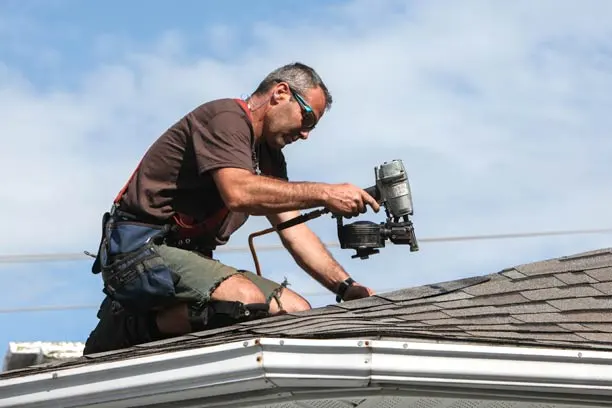The Most Expensive Home Repairs You’ll Encounter


It’s no secret that owning a home is a costly endeavor, but some repairs are much more costly than others. Here are the major home repairs to budget for to protect your investment.
A new foundation can cost the average homeowner $40,000 or more, so fixing problems as they appear will help you save money in the long run. Cracks and fractures on outside walls or in your basement, sagging floors, buckling walls and moisture or mold could be signs of a larger foundation problem. If you notice doors and windows are not closing properly, they may be misaligned due to the foundation shifting. Tree roots and large shrubs, erosion and extremely wet or dry conditions can also cause problems for the base of your home. Even burrowing animals like moles can damage your foundation by loosening the dirt around the house.
A new roof can cost you anywhere from $5,000 to $25,000 or potentially more. Be sure to keep an eye on your roof for signs of damage. If your roof is more than 20 years old, it’s likely you need a replacement. Watch for leaks inside, as well as torn, cracked or missing shingles outside. A roof is more likely to leak near the end of its lifespan, but keep in mind that age isn’t the only thing that can damage your roof. In colder climates, ice dams are caused by poorly-insulated roofs and can damage the roof by expanding below shingles and into existing cracks. Ice dams can form on old and new roofs, depending on the heat radiating through the roof.
The water heater is one of those appliances that most of us take for granted until we end up stuck in an ice-cold shower. Repair or replacement costs for a water heater could range from $500 to $1,000. Damage from leaks and floods can really run up the tab. Water damage remedies typically cost around $2,300 or more, depending on the size and scope of the project. To prevent major issues, check the pressure valve periodically and flush the tank once a year. If you notice loud or unusual noises or any signs of a leak, call a plumber.
Termites can do major damage to a home, so seek immediate treatment when you notice the smallest sign of infestation. These signs could include wings shed by the insects, tubes through the wood or any other unexplained damage. Treatment costs an average of $541, but the damage caused by termites typically costs around $7,000. Attics, crawl spaces and anywhere with substantial woodwork are the most likely spots you’ll find termites. Unfortunately, termite damage can often go unseen for years as the insects weaken support beams, floor and ceiling joists, posts and studs. To keep your home protected from termite damage, arrange to have a licensed pest control company inspect and treat your home on a regular basis.
A heating, ventilation and air conditioning (HVAC) system controls the heat, humidity and air flow inside a building. It acts like your home’s respiratory system, regulating the temperature to keep the house cool in summers and warm in winters, cleaning the air, and maintaining the right amount of air moisture. Most HVAC systems have a lifespan of 10 to 15 years, and some can even last for 20. When they do need to be replaced, they don’t come cheap. Installing a new system can be one of the most costly repairs on a home, ranging anywhere from $6,000 to $12,000. Some of the factors that contribute to the cost of an HVAC replacement include the size and layout of your house, the reusability of the ductwork, the system's energy efficiency and the complexity of the project.
Just like termites, mold can do unseen damage to your home for years, and the average cost of removal is $3,500. Beyond the financial concerns, mold can threaten the health of those who live in your home, cause respiratory problems and other health issues. Mold often grows behind walls, drywall and wallpaper, or in spots where water has accumulated over the years. The smell of mold or mildew may be the only sign that something is wrong. If you see mold, act immediately. Even a small amount of visible mold may be the result of large patches hidden behind walls, the ceiling or under floors. Look for water stains or discoloration for an idea of where the problem areas may be. Running dehumidifiers in the basement or other damp areas can help prevent the formation and spread of mold.
Your home is likely to be your biggest investment. If you would like to review your coverage in case an unexpected issue arises in your home, contact your local Farm Bureau agent. You can also request a quote today and see how we can help.